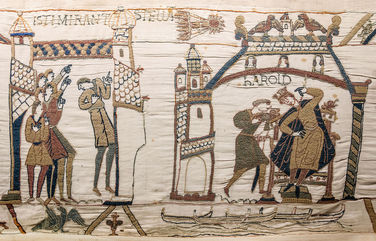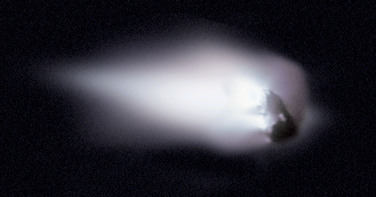This famous comet was the first to be recognized as a periodic or returning comet. The astronomer Edmond Halley deduced that the bright comets seen in 1531, 1607, and 1682 were all the same comet and predicted its return in 1758.
Once the period of Comet Halley had been determined, historians found evidence for past visits dating back to 240 B.C. The Bayeux Tapestry that illustrates the Battle of Hastings in 1066 clearly shows a bright comet, now known to be Comet Halley.
Comet Halley passes close to Earth and the sun approximately every 76 years, although the exact period has varied from 75 to 79 years. The comet's brightness on each pass varies significantly. Probably the best appearance was in 1837, when Comet Halley reached a brightness of magnitude -3 (almost as bright as Venus), and its tail covered more than 60 degrees in the sky. Comet Halley's last appearance in 1986 was relatively disappointing, because its brightness only reached magnitude 2.6.
The Giotto spacecraft visited Comet Halley and took close-up images of the nucleus during its 1986 flyby.
Two minor meteor showers, the Eta Aquarids and the Orionids, are caused by Earth's passing through debris left behind by past visits of Comet Halley.

